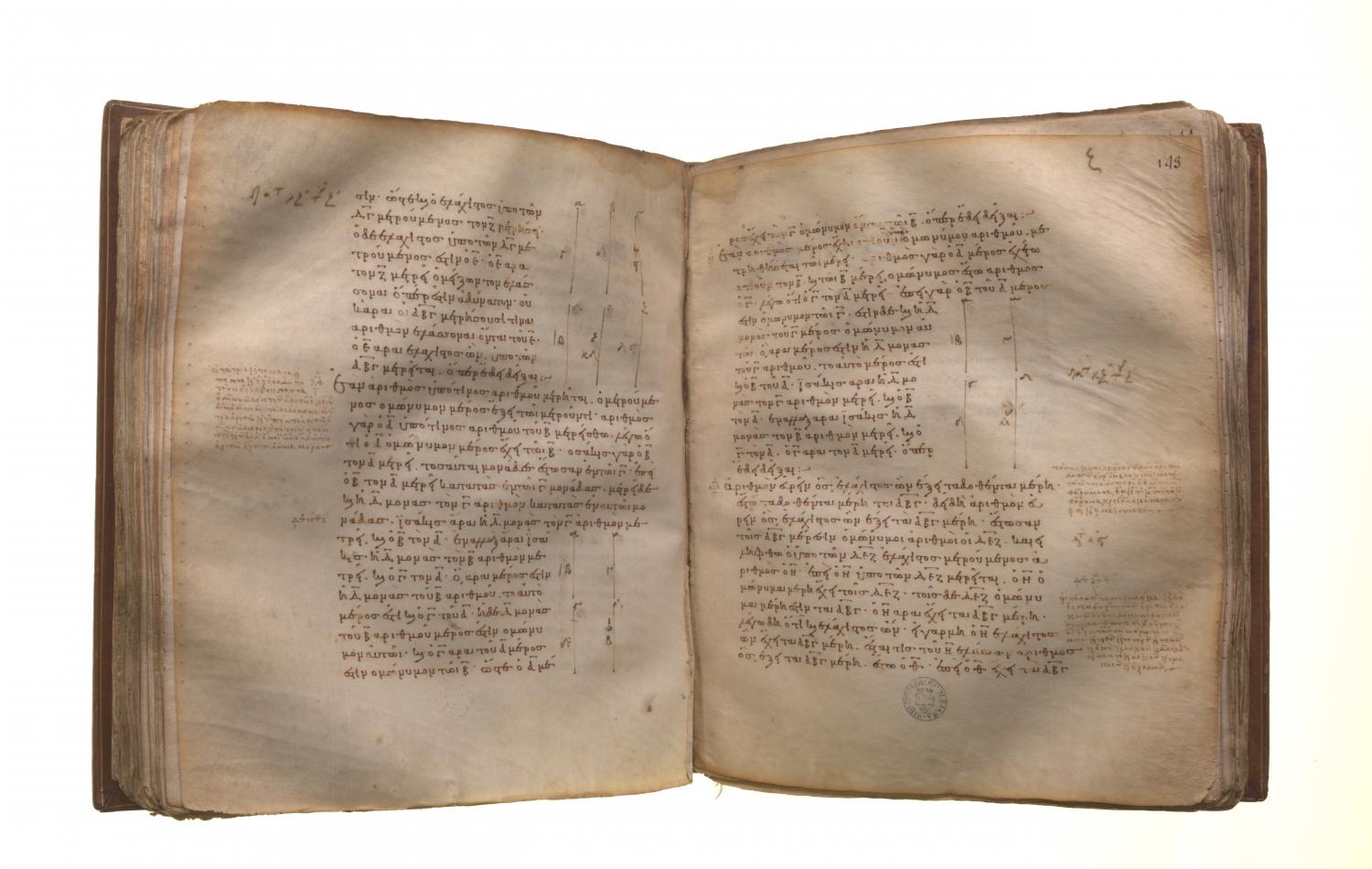Translations
Ἐὰν ἀριθμὸς ὑπό τινος ἀριθμοῦ μετρῆται, ὁ μετρούμενος ὁμώνυμον μέρος ἕξει τῷ μετροῦντι. Ἀριθμὸς γὰρ ὁ Α ὑπό τινος ἀριθμοῦ τοῦ Β μετρείσθω: λέγω, ὅτι ὁ Α ὁμώνυμον μέρος ἔχει τῷ Β. Ὁσάκις γὰρ ὁ Β τὸν Α μετρεῖ, τοσαῦται μονάδες ἔστωσαν ἐν τῷ Γ. ἐπεὶ ὁ Β τὸν Α μετρεῖ κατὰ τὰς ἐν τῷ Γ μονάδας, μετρεῖ δὲ καὶ ἡ Δ μονὰς τὸν Γ ἀριθμὸν κατὰ τὰς ἐν αὐτῷ μονάδας, ἰσάκις ἄρα ἡ Δ μονὰς τὸν Γ ἀριθμὸν μετρεῖ καὶ ὁ Β τὸν Α. ἐναλλὰξ ἄρα ἰσάκις ἡ Δ μονὰς τὸν Β ἀριθμὸν μετρεῖ καὶ ὁ Γ τὸν Α: ὃ ἄρα μέρος ἐστὶν ἡ Δ μονὰς τοῦ Β ἀριθμοῦ, τὸ αὐτὸ μέρος ἐστὶ καὶ ὁ Γ τοῦ Α. ἡ δὲ Δ μονὰς τοῦ Β ἀριθμοῦ μέρος ἐστὶν ὁμώνυμον αὐτῷ: καὶ ὁ Γ ἄρα τοῦ Α μέρος ἐστὶν ὁμώνυμον τῷ Β. ὥστε ὁ Α μέρος ἔχει τὸν Γ ὁμώνυμον ὄντα τῷ Β: ὅπερ ἔδει δεῖξαι.
If a number be measured by any number, the number which is measured will have a part called by the same name as the measuring number. For let the number A be measured by any number B; I say that A has a part called by the same name as B. For, as many times as B measures A, so many units let there be in C. Since B measures A according to the units in C, and the unit D also measures the number C according to the units in it, therefore the unit D measures the number C the same number of times as B measures A. Therefore, alternately, the unit D measures the number B the same number of times as C measures A; [VII. 15] therefore, whatever part the unit D is of the number B, the same part is C of A also.
